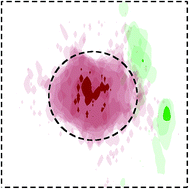Random alloy fluctuations and structural inhomogeneities in c-plane InxGa1−xN quantum wells: theory of ground and excited electron and hole states
Abstract
We present a detailed theoretical analysis of the electronic structure of c-plane InGaN/GaN quantum wells with indium contents varying between 10% and 25%. The electronic structure of the quantum wells is treated by means of an atomistic tight-binding model, accounting for variations in strain and built-in field due to random alloy fluctuations. Our analysis reveals strong localisation effects in the hole states. These effects are found not only in the ground states, but also the excited states. We conclude that localisation effects persist to of order 100 meV into the valence band, for as little as 10% indium in the quantum well, giving rise to a significant density of localised states. We find, from an examination of the modulus overlap of the wave functions, that the hole states can be divided into three regimes of localisation. Our results also show that localisation effects due to random alloy fluctuations are far less pronounced for electron states. However, the combination of electrostatic built-in field, alloy fluctuations and structural inhomogeneities, such as well-width fluctuations, can nevertheless lead to significant localisation effects in the electron states, especially at higher indium contents. Overall, our results are indicative of individually localised electron and hole states, consistent with the experimentally proposed explanation of time-dependent photoluminescence results in c-plane InGaN/GaN QWs.


 Please wait while we load your content...
Please wait while we load your content...